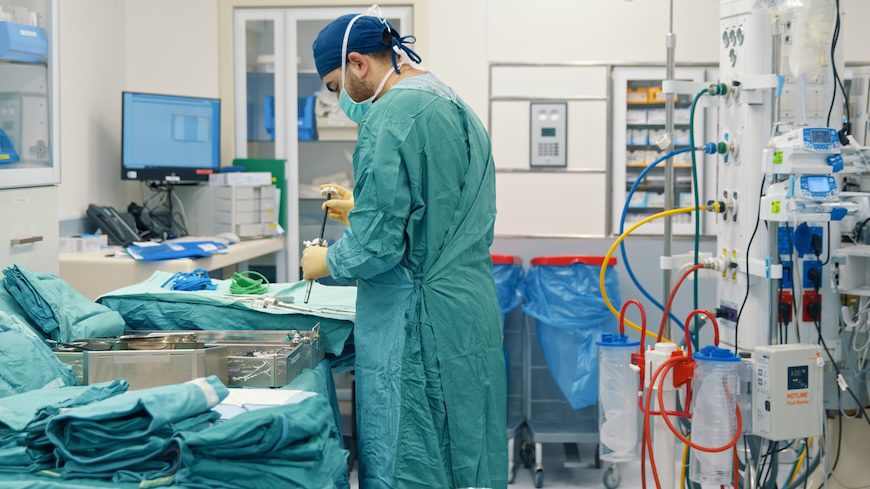Scientists believe the so-called “party drug” MDMA may be able to speed recovery from post-traumatic stress disorder (PTSD).
MDMA, also known as “ecstasy” or “molly,” is short for the chemical compound 3,4-Methylenedioxymethamphetamine. In recent years, the drug has been the subject of intense clinical testing.
Emerging Evidence
The Multidisciplinary Association for Psychedelic Studies (MAPS), a team of neuroscientists, recently concluded phase three clinical trials for MDMA and will soon publish their findings, the last hurdle before FDA approval. MAPS founder Rick Doblin told the website Drug Discovery & Development that MDMA could be a legal treatment for PTSD within a year.
In the latest MAPS study, 90 participants with PTSD were given 80-100 milligram MDMA pills before psychotherapy sessions. The study lasted three months and included three, eight-hour treatment sessions. These were preceded by three preparatory sessions to help set participant expectations. After treatment, participants underwent integration sessions, which provided them with a way to further unravel and process troublesome memories. Integration therapy also maximized therapeutic benefits and minimized harms, the researchers said.
Complex PTSD is No Joke for Comedian, Kathy Griffin
Long-Term Study on PTSD Following a Natural Disaster
Mindfulness Training Versus Psychoeducational in PTSD
Participants who received MDMA-assisted therapy sessions were twice as likely to recover compared to therapy participants receiving a placebo. Sixty-seven percent no longer qualified for a PTSD diagnosis and 88 percent experienced a clinically meaningful reduction in symptoms. If approved, it would also enable them to explore the drug’s benefit for other conditions, including depression, anxiety, substance-use disorders, autism spectrum disorder, and compulsive disorders.
MDMA and the Brain
Jennifer M. Mitchell, a professor of neurology at the University of California, San Francisco and MAPS clinical investigator, explained that MDMA acts on the amygdala, the part of the brain that processes fear-related memories and facilitates memory retrieval. When clinicians use MDMA in a clinical setting, they say it helps untangle, consolidate, and release deeply-ingrained memories that may have been suppressed.
Additionally, MDMA facilitates the release of oxytocin, a hormone that “makes you feel connected to other people,” Mitchell told Psychiatrist.com. “People are also then able to identify a lot of self-compassion,” she added.
The end result, Mitchell said, creates an environment in which participants can take comfort in their therapy team, approach their memories from a different lens, and ultimately begin to heal.
Safety Concerns Eased
MDMA has long carried a stigma for its use as ecstasy and molly as a party drug.
“In my generation, we were told that [MDMA] could burn holes right through your brain, and that obviously scared people,” Mitchell said.
In 2014, an otherwise healthy 16-year-old student in London died of a heart attack after dancing all night on MDMA, causing mass concern for the drug’s effect on the cardiovascular system. Mitchell and her peers have taken this concern seriously. She said they carefully track MAPS trial participants’ cardiac function during treatments.
“So far, we haven’t seen any indication of a cardiac burden through administering MDMA in this setting,” she said.
Additionally, Dr. Mitchell emphasized that MDMA therapy does not, in actuality, erase traumatic memories from the brain. “In fact, I think some people remember better—but they’re less avoidant; they’re less ashamed,” she said.
That doesn’t mean there aren’t any downsides to MDMA treatment. For one, it’s expensive and time intensive, making it inaccessible for many of the patients who may benefit from it most. There are additional concerns of addiction.
“Just like all the other amphetamines, you want to be very careful with them, to not over-administer, and to make sure that somebody doesn’t have an addictive tendency to the amphetamine,” Mitchell said.
Because the drug could be prone to abuse, researchers recommend that providers use it in tandem with psychotherapy. As Mitchell pointed out, “You wouldn’t send this home with people to do on their own in their living room. You do it in a good, trained treatment facility and that way, you don’t have to worry as much.”
Another downside to the drug is the lack of research on the entirety of its impact on the brain. With that in mind, researchers usually don’t allow participants in their studies who suffer from comorbidities.
“There are people who have personality disorders, there are people who have other major diseases,” said Mitchell. “We don’t yet know what these compounds in general—but MDMA in particular—do to those people who have these other disorders.”
Turning Tides
Younger generations appear to be more accepting of experimental drug therapies, including psychedelics. It’s a shift Mitchell credits to the prevalence of psychostimulant use among millennials and Gen Zers with ADHD.
The preliminary data is also encouraging. Mitchell said that MDMA therapy completely transforms some patients. She has observed individuals who started out with debilitating PTSD and then no longer meet the qualifications for a diagnosis within the span of three months.
“That’s typically the kind of change that takes years to occur in psychotherapy,” she said.



